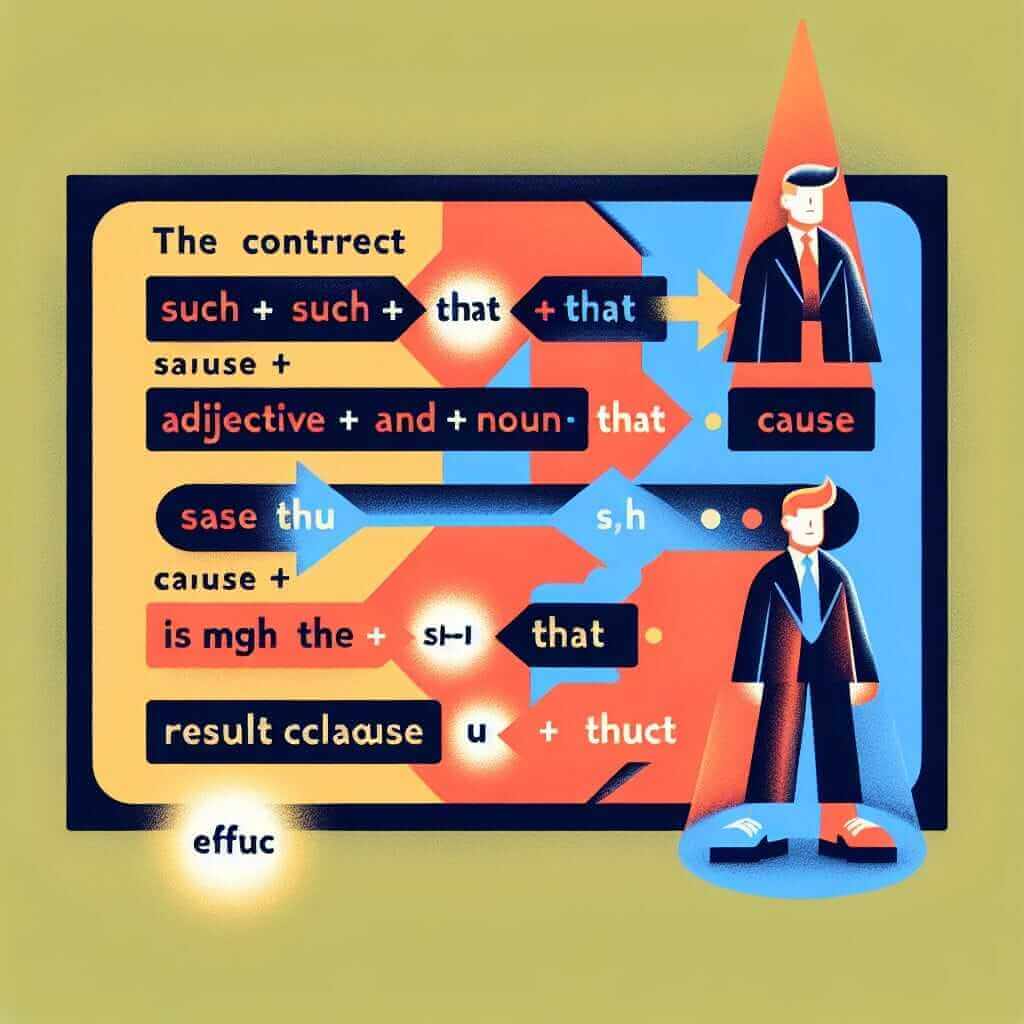The “such… that” construction is a valuable tool to have in your grammatical toolbox for the IELTS exam. It allows you to express cause and effect relationships in a clear and sophisticated manner, potentially boosting your score in both the Writing and Speaking sections. Let’s take a look at how this structure works and how you can use it effectively.
Examples:
- Speaking (Part 2): “My grandfather was such a charismatic storyteller that everyone would gather around to listen to his tales.”
- Writing Task 2: “The impact of social media has been so profound that it has transformed the way we communicate and consume information.”
- Writing Task 1: “The chart shows such a dramatic increase in online sales that it’s clear consumer habits have shifted significantly.”
Analysis:
In each of these examples, the “such… that” construction highlights the intensity of something (e.g., the grandfather’s charisma, the impact of social media) and its resulting effect. This structure adds emphasis and clarity to the relationship between cause and effect.
Understanding “Such… That”
The “such… that” structure is used to express a result arising from a cause. Essentially, it means “to such a great degree that”. While this construction might appear simple, using it effectively can make your writing and speaking more sophisticated and impactful.
Structure and Grammar
Formula:
Such + (adjective) + (noun) + that + (result clause)
So + (adjective/adverb) + that + (result clause)
Breakdown:
- Such/So: These words introduce the cause and emphasize its intensity. Use “such” before a noun (with or without an adjective) and “so” before an adjective or an adverb.
- Adjective/Adverb: This describes the noun or verb, emphasizing the degree or intensity of the cause.
- Noun: This is the thing that possesses the quality being emphasized.
- That: This conjunction connects the cause to the result.
- Result Clause: This clause explains the outcome or consequence of the cause.

Applying “Such… That” in IELTS
Writing Task 2
- Expressing Strong Opinions: “The evidence against climate change is so overwhelming that it is no longer possible to deny its existence.”
- Highlighting Consequences: “Pollution levels in some cities are such a serious problem that residents are forced to wear masks outdoors.”
Writing Task 1
- Describing Trends: “There was such a significant drop in unemployment that the government hailed the program a success.”
- Comparing Data: “Country A experienced such rapid economic growth that it surpassed Country B in GDP within a decade.”
Speaking
- Adding Emphasis to Stories: “We had such a wonderful time on holiday that we’re already planning our next trip.”
- Expressing Personal Opinions: “I find meditation so beneficial that I practice it every morning.”
Achieving Band 7+ with “Such… That”
- Variety: Don’t overuse “such… that.” Consider synonyms like “so…that”, “as a result,” “consequently,” or “therefore” to demonstrate a wider range of vocabulary.
- Natural Usage: Ensure the structure sounds natural within your sentence. Avoid awkward phrasing.
- Correct Grammar: Pay close attention to subject-verb agreement and the tense used in both the cause and result clauses.
Common Mistakes to Avoid
- Incorrect Word Order: The correct order is crucial. Don’t place “that” before the noun.
- Missing “That”: The conjunction “that” is essential to connect the cause and effect.
- Overuse: Using “such… that” too frequently can make your writing sound repetitive.
Conclusion
Mastering the “such… that” construction equips you with a versatile grammatical tool for expressing cause and effect relationships effectively. By understanding its structure, nuances, and application in different IELTS tasks, you can enhance the clarity, sophistication, and impact of your language. Remember to practice using this structure in various contexts to build your confidence and accuracy for the exam.